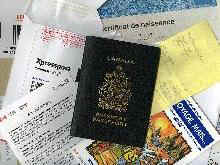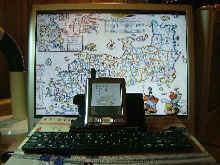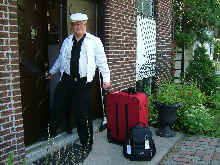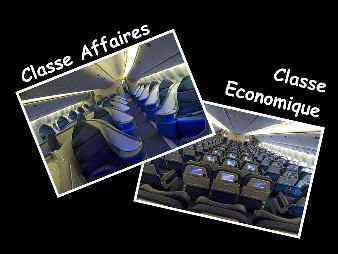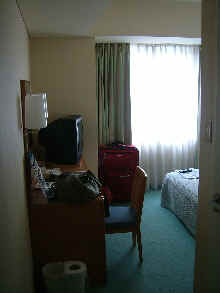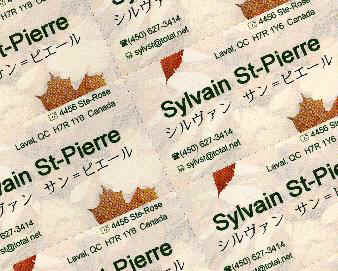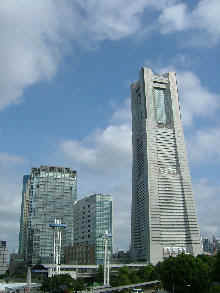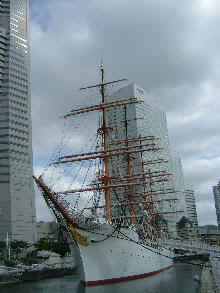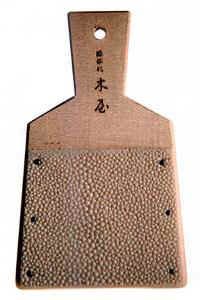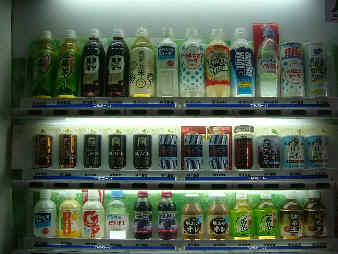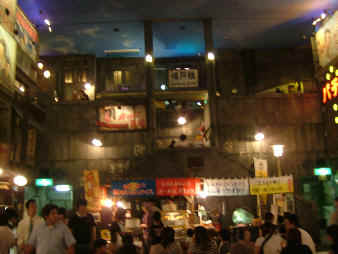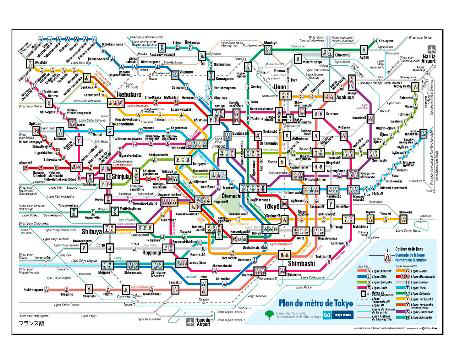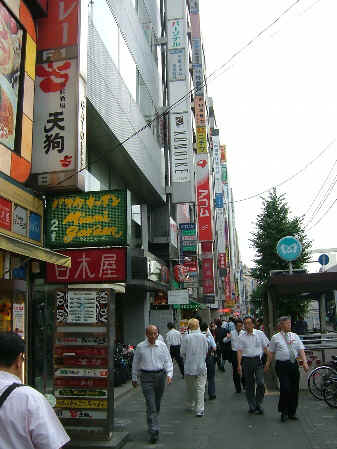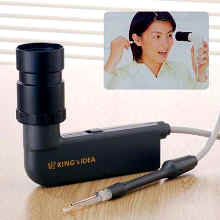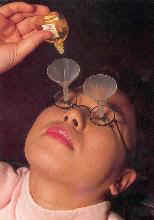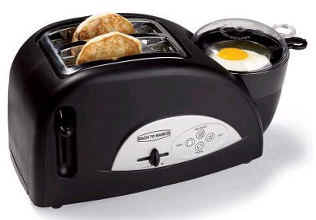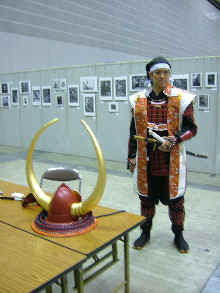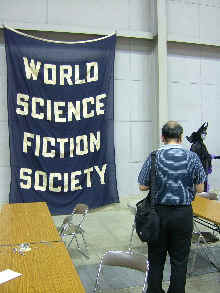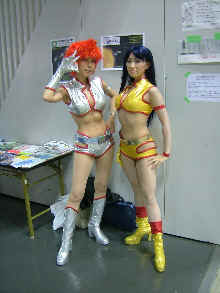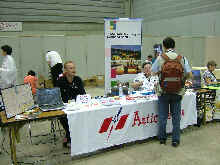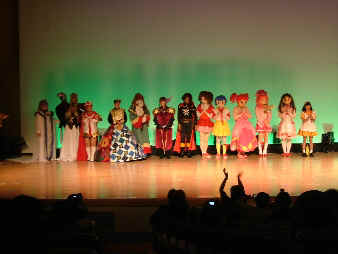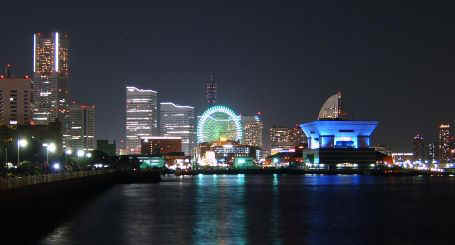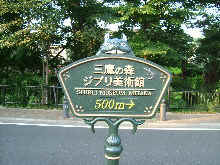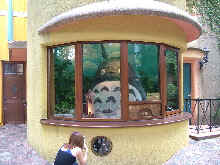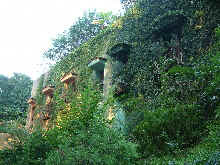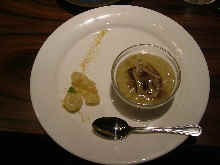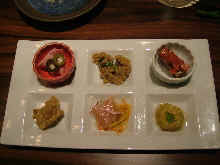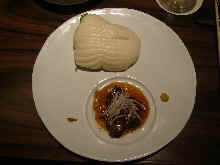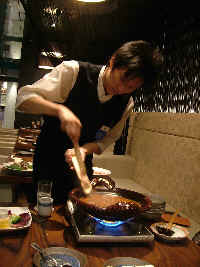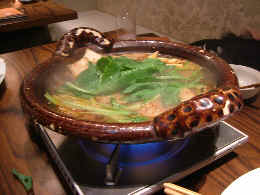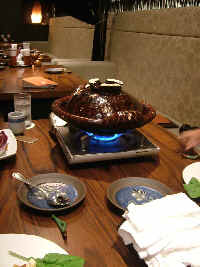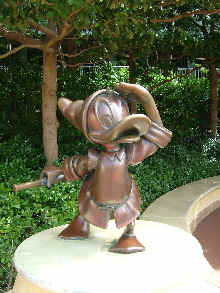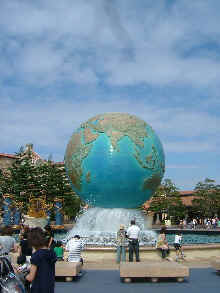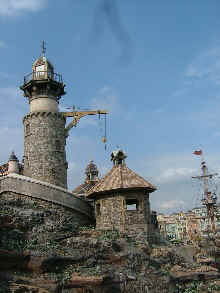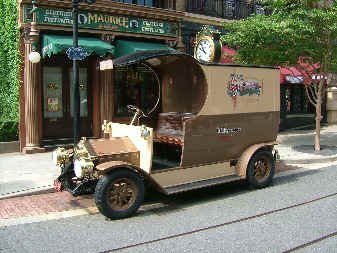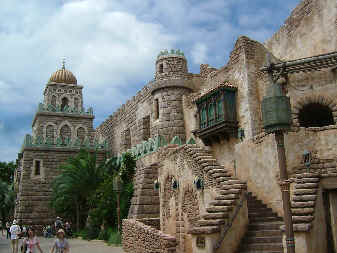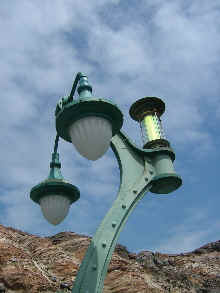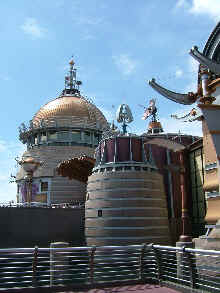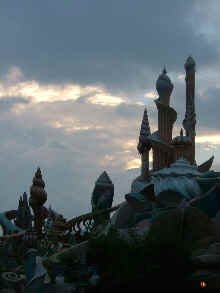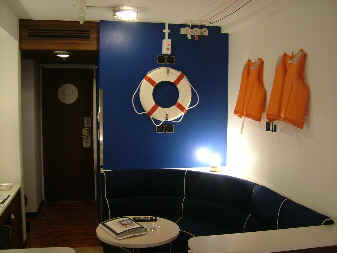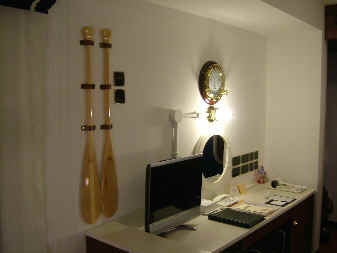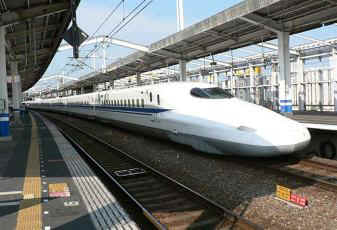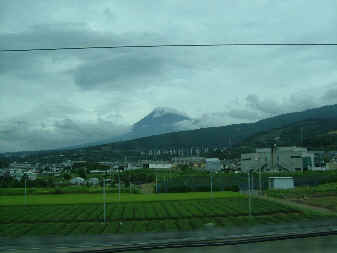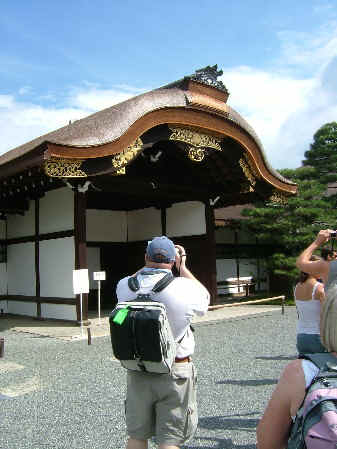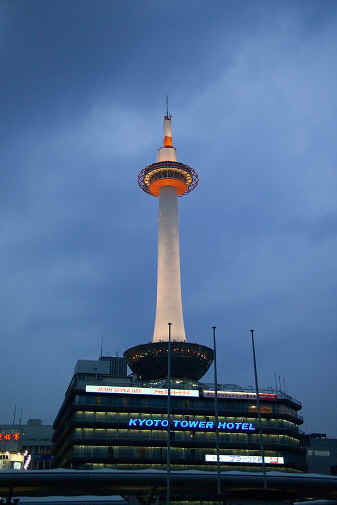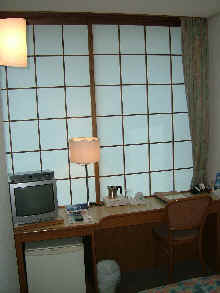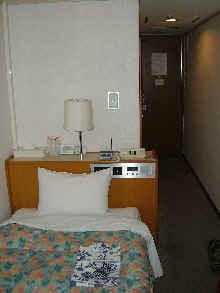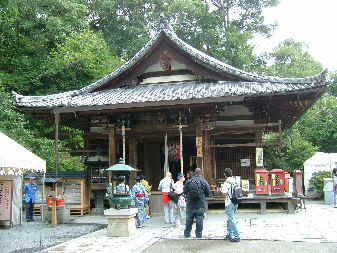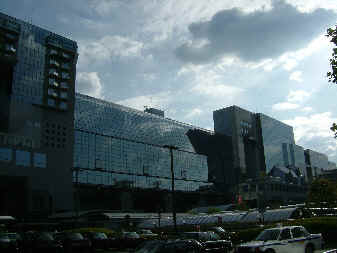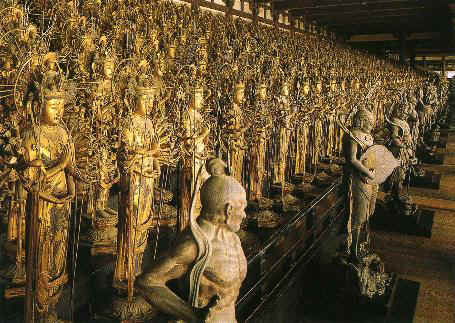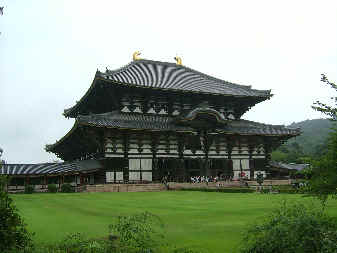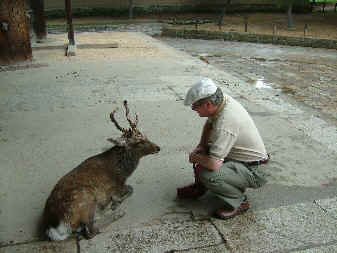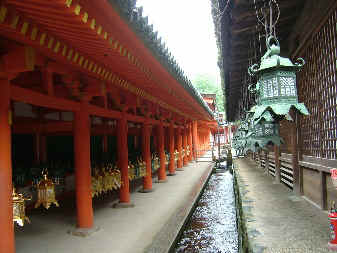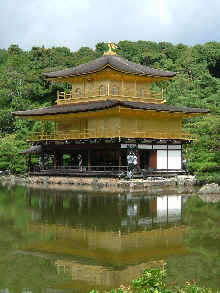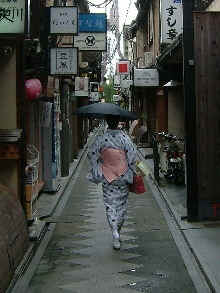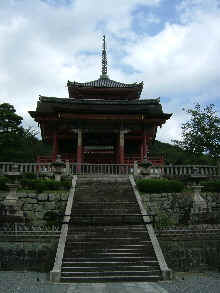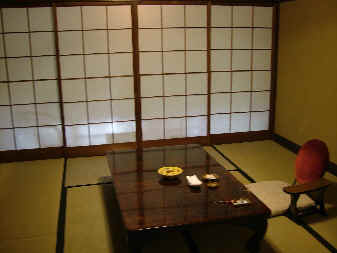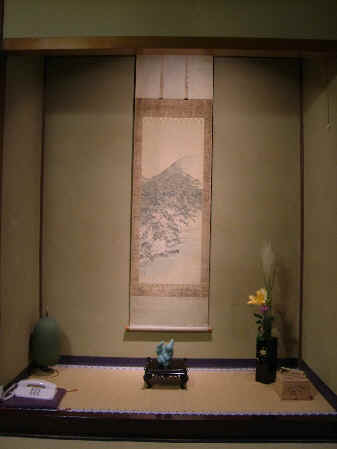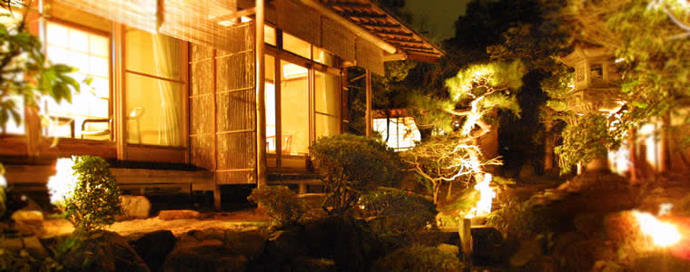|
|||||||
I wanted to send the following message from home, just before leaving, but I then encountered my first software problem. A keystroke error in my recipents list prevented my server from accepting it, and I really did not have the time to correct it. So I saved the text, intending to send it from Japan. |
|||||||
kayobi, ni sen shichi, hachi gatsu, ni ju hachi Tuesday August 28, 2007 - From Montreal to Yokohama |
|||||||
There. As I write these lines, my taxi should be here in a few minutes to bring me to the airport. I would be lying through my teeth if I was to say that I am not just a bit excited! I have revised my checklist twice, and nothing is missing. Passport, tickets, dollars, yens, clothes, toiletries, business cards with my name written in katakana characters, everything is there. I also took the precaution of having all my reservations confirmed. This is not exaggerated caution: my Kyoto hotel had no trace of my name when I checked six weeks ago, despite the fact that payment had been made in advance! Fortunately, everything has been cleared now. I might perhaps manage to find something once there in case of trouble, but I would rather not try it at the last minute, so far away from home. Going to such a distant city is going to take a while. If I stick to my schedule, I will have to travel for 21 hours before I can collapse in my bed in Yokohama! I can't wait for somebody to perfect teleportation. I will try to send updates as often as possible, but since I do not know exactly how easily I will find Internet connections, I cannot make promises as to how often that will be. I may very well have to cumulate entries and send several at once. Writing down the details of my journey should be easy enough, for I have an excellent Palm Pilot that will allow me to edit the text whenever I have a few minutes, while the events are still fresh in my memory. I will also do my best to send you some photographs. I have loaded a picture manager program on my USB key, and it should allow me to easily transfer the shots from my digital camera and resize them to a manageable level. But I do not know for sure that it will run on the computers I will use, nor do I want to overload your e-mail boxes. This log being sent to several people, it will be out of necessity somewhat generic. It is also bilingual, because it was easier to proceed that way than to send separate versions according to the language spoken by each of you. I have already discussed the details of this trip with some, and you may already be quite knowledgeable about this country. Some may have been there - perhaps more than once - and there are even a few recipients whose own trip will overlap mine. I ask those to bear with me if I appear to be patronizing, as not everybody is so lucky! Sayonara then, until next time. Sylvain St-Pierre P.S. If you wish to contact me during this trip please do not forget to use the sylvst@total.net e-mail address rather than the "reply" function, as I will likely use many different terminals.
|
|||||||
|
|||||||
I quickly found Internet accesses in Yokohama. They have terminals there all over the place that cost only 100 yens (less than a dollar) for ten minutes. Second problem: they are mainly built for browsing and do not have USB ports. OK, no pictures, but that is not the end of the world. Third problem: they don't have built-in e-mail software either. So what, I told myself, I'll just go directly on my server's website. Major snag: the safety protocol on my server stubbornly refuses to accept my message! There must be something special in the formating of those Japanese terminals. I can read the e-mails sent to me, but cannot send any. There, you now know why you did not hear from me during my trip. I hope you did not worry too much.
|
|||||||
suiyobi, ni sen shichi, hachi gatsu, ni ju kyu Wednesday August 29, 2007 - Hello From Japan |
|||||||
| Oaiyo gozaimasu! Surely you must have realized by now that the first line of the heading is the date in Japanese (at least, I think it is…). Their system is logical enough, at least in part. For example, "hachi gatsu" translates literally as "eight month", meaning August. The days of the month, however, are numbered using Chinese words, which is a bit confusing! The flight went without a problem. It was just terribly long. The boarding procedures went very smoothly; I was not searched and they did not even ask me to take off my shoes. But then again, I did not go through the United States. |
|||||||
|
|||||||
Coach is not bad either, with a TV set for each seat and 80 hours of individually controlled recorded video. The system is fragile, however, and freezes up easily. The strangest thing about the flight is that the speed of the plane is almost the same as the rotation of the Earth, so it looks like the Sun is not moving. A never-ending afternoon!
|
|||||||
 |
|||||||
Transfer between the airport and the hotel also went well, by train and taxi. I had prepared cards with the address in Japanese and a map, but my well rehearsed "Sakuragicho Washington hoteru, onegai shimasu" did the trick fine and it was a short trip anyway. |
|||||||
|
|||||||
I had a light meal with other conventionners before going to bed, and tried my Japanese again. The waitress did not slap me and it was very good. The food, I mean. For those who might be wondering, no, I do not speak fluent Japanese. It is a tough language to learn for a Westerner, with a very different grammar than what we are accustomed to. For the last few months, I did however concentrate on learning a few words and expressions useful to a kankokyaku (tourist). Things like how to ask directions, order in restaurants and where are the otearai (toilets) please. Basic politeness is always appreciated anywhere, and even more so here. Fortunately, pronunciation is very easy and there are no sounds that cannot be handled by a person who already speaks French and/or English. The reverse is not quite true however, and although the people with whom I have been speaking so far know a lot more English than I will ever know of Japanese, I often still have to listen very carefully to understand them. |
|||||||
|
|||||||
mokuyobi, ni sen shichi, hachi gatsu, san ju Thursday August 30, 2007 - First Impressions of Yokohama |
|||||||
I slept quite well but, still trying to adjust to the jet lag, I have decided to take it easy today and limit my exploration to the immediate surroundings. There is a tourist information center, with English speaking attendants, just a few steps away. Access to the convention center is even easier than I thought. It is only a kilometer from my hotel, most of that by covered walkways or through buildings. A ten or fifteen minutes walk. You just need to find your way amongst thousand of office workers going to their job. They are however quite disciplined and there is no justling. |
|||||||
|
|||||||
|
|||||||
|
|||||||
Food stores are fascinating, made even more so by the fact that in many cases I have to guess the nature of the products. The drinks, in particular, are mesmerizing. Many of the cans have English sub-titles and I have been able to spot beverages based on young coconut juice, lychee, basil seed, aloe vera and grass jelly (?!). One popular drink around here is called Pocari Sweat, and I would rather not speculate on what goes in it. (More seriously, it is a sport drink, like Gatorade. "pocari" means "floating like a cloud in the sky" in Japanese) |
|||||||
|
|||||||
|
|||||||
I had a quick look at what is on TV here, having heard that there are weird shows on Japanese television. It does surprise a bit at first, even taking the language into account. But looking closely, it is not all that strange. |
|||||||
kinyobi, ni sen shichi, hachi gatsu, san ju ichi Friday August 31, 2007 - A Skip to Tokyo |
|||||||
|
|||||||
|
|||||||
|
|||||||
doyobi, ni sen shichi, ku gatsu, tsuitachi Saturday September 1, 2007 - The Nippon Convention |
|||||||
I would have liked a second small trip to Tokyo, to visit the Edo Fukagawa Museum. This place displays very realistic reconstructions of old Japanese buildings, to show the current generation how their great-great-grand-parents lived. But after yesterday, I was poofed and I concentrated on the convention instead. Likewise, I will postpone my visit to Kappabashi Street, where they make those famously life-like reproductions of dishes found in the window of many Japanese eating establishments, the sanparu (from the English word "sample"). Even from very close up, there is no way to tell the difference for some of them. I therefore quietly enjoyed the convention that is the official excuse for my trip. The style is quite different from the North American versions. You can see that, for the first time outside of the United States for this event, the natives have the upper hand. |
|||||||
|
|||||||
nichiyobi, ni sen shichi, ku gatsu, futsuka Sunday September 2, 2007 - More of Nippon |
|||||||
I stayed in Yokohama today, to enjoy more of the convention and visit a few local attractions. I am rested enough to go back to Tokyo, but there are events today that I do not wish to miss. I went up to the Landmark Tower Observation Deck, from which it is possible to see Mount Fuji on a clear day. Sadly it was a bit hazy and only a vague silhouette could be perceived. |
|||||||
|
|||||||
|
|||||||
|
|||||||
getsuyobi, ni sen shichi, ku gatsu, mikka Monday September 3, 2007 - The Ghibli Museum |
|||||||
Last day of the Nippon Convention which, everything said and done, was quite a success. Immediately after the closing ceremony, a number of fans and myself left for a trip to the Ghibli Museum, devoted to the work of Hayao Miyazaki, a famous animé producer. As it was a bit far, we had to start early. It is a very whimsical place, with fantastic architecture, even if one is not familiar with the genre. |
|||||||
|
|||||||
We came back in the evening and, to finish the day on a high note, we had a four course Mongolian fondue. Very interesting, mostly because the waiter did not speak English at all… It was a bit adventurous of us, but all in all it turned out to be quite a lavish feast. |
|||||||
|
|||||||
|
|||||||
Amongst other interesting attractions in Yokohama can be found, in no particular order, a silk museum, a doll museum, a tin toys museum and a cat museum. There is as well a beautiful cruise ship from 1930s, the Hikawa-Maru, but it is currently being renovated and will not open again to the public until next year. It is also in this city that the largest Chinatown in Japan is located, something that foreigners often find amusing. At first glance, it seems made almost entirely of restaurants, and it is a popular dining spot. |
|||||||
kayobi, ni sen shichi, ku gatsu, yokka Tuesday September 4, 2007 - DisneySea |
|||||||
All right, Disney is not the first person who comes to mind when you think about Japan. But the Japanese themselves absolutely adore him. They are very fond of theme parks, and the Disney ones here are the most visited in the world. While there are Magic Kingdoms in California, Florida and in France, the Japanese DisneySea is the only one on Earth. Which is why I decided to include it in my itinerary. The theme of this particular park is, curiously enough, the sea. Like all Disney attractions, it is clean, in good taste and with a lot of attention lavished on details. It is also great fun and I do not regret one bit to have devoted a full day to this place. The site is divided in different "ports" from around the world, including the Mediterranean, Arabia and the fascinating and far away United States. I especially liked Port Discovery and Mysterious Island, inspired by Jules Verne. Mermaid Lagoon is truly spellbinding at night. Most of the labeling is done using the Latin alphabet, with smaller lines of Japanese script underneath. This is not done for the convenience of foreign visitors, but for the enjoyment of the Japanese, who find this lettering exotic. The spoken commentaries and theme songs, on the other hand, are in Japanese, which is not, when you think about it, any more ridiculous than English in those "ports" inspired by Italy and the Middle-East. I was really quite lucky: this has been the sunniest day since I arrived, which has allowed me to take georgous pictures. I even got a bit of a sunburn! |
|||||||
|
|||||||
|
|||||||
|
|||||||
My hotel was rather amusing. The room is intended for two persons, but it is not much larger than the one I had in Yokohama. It is decorated like a ship's cabin, which is a very appropriate style. Even the corridors look like gangways. There are also life jackets on the walls, which is no doubt practical in case of tsunami. The paddles are "Made in Canada". |
|||||||
|
|||||||
suiyobi, ni sen shichi, ku gatsu, itsuka Wednesday September 5, 2007 - By Shinkansen to Kyoto |
|||||||
|
|||||||
|
|||||||
I solved the
problem of the lack of luggage storage space by having my suitcase shipped directly from
my |
|||||||
|
|||||||
Those two places are unfortunately very popular and there were no slots left when I tried to make a reservation two months ago. Oh well, it means that I'll be able to see something new on my next trip here. |
|||||||
|
|||||||
|
|||||||
Kyoto was the capital of Japan before 1868, when it lost this distinction to Tokyo. It is now a modern city, but there are many charming old corners preserved, sometimes in unexpected places. It is a striking contrast to see a thousand year old temple in the shadow of a steel and glass skyscraper. |
|||||||
|
|||||||
mokuyobi, ni sen shichi, ku gatsu, muika Thursday September 6, 2007 - Nara |
|||||||
|
|||||||
There is one large statue of Kannon and a thousand smaller ones, which is quite impressive. An interesting detail is that the exact gender of Kannon is open to debate, and some of his/her statues have a mustache. I then devoted the
afternoon and early evening to a trip to the nearby city of Nara, which was the first
capital of Japan between 710 and 784. The guided tour I took covered three places of
interest. |
|||||||
|
|||||||
|
|||||||
|
|||||||
There are many more interesting sights in this city, but they will have to wait for an eventual return. One day, I hope… It seems that I have an uncanny luck regarding the weather. Back to the hotel, I learned that the light rain in Nara was an edge effect of a small typhoon that is currently striking Tokyo. There is some flodding and public transportation has been halted! Two days earlier and I would have felt the full force of it. I did well to bow in front of the statue of the goddess of Mercy! |
|||||||
kinyobi, ni sen shichi, ku gatsu, nanoka Friday September 7, 2007 - A Night at the Ryokan |
|||||||
I started the day with a visit to the Kinkakuji (Golden Pavillion), a Zen temple covered in real gold foil. I then took a stroll trough the very respectable Pleasure Quarter of Gyon and climbed up to the Kyomizudera (Temple of Pure Water), from where there is superb view on the city. |
|||||||
|
|||||||
This last walk was quite heroic, for the temple is rather high up and it was very warm. I must certainly have earned buddhist holyness, and if I am turned back at the gate of Paradise, I think I have my chances with Nirvanah. I was so tired that I dropped my intended visit to the Silver Pavillion (which is not actually covered in silver) and of the Philosopher's Path, a nice walk along a canal. One of the reasons why there are so many temples here is that there are two main religions in Japan: Shintoism and Buddhism, and Buddhism is further fractioned in a multitude of more or less esoteric sects. They all coexist rather harmoniously, and it is not rare to find two separate altars in homes, each dedicated to a different worship. There are eight million gods in the Shinto religion, and it's a good thing that nobody is required to name them all in their evening prayers. |
|||||||
|
|||||||
|
|||||||
This is also the largest room I've seen this trip. It is quite lavish at 10 tatamis, a local unit of measure based on the size of the mats, which are 190 by 95 centimeters in this region (the tatamis of Tokyo are smaller). The almost complete absence of furniture makes it seem even bigger. And the service! Ryokans are generally small familial establishments, and guests are pampered like you would not believe. The price included not only breakfast, but also a very lavish classical kaiseki dinner, which consist in a seemingly unending succession of two or three bite dishes, stylishly served in my room by a very dignified kimono clad lady. |
|||||||
It used to be that Japanese etiquette demanded that you left nothing whatsoever in your plate, even if it meant hiding inedible parts in your sleeves. This is no longer required, but it is still seen as ill mannered not to eat all the food served to you. Now, I admit that I can fork it up (chopstick it up?) quite well, but there were so many dishes that I had to force myself a little to finish. Ah, the things I do to preserve international peace… |
|||||||
doyobi, ni sen shichi, ku gatsu, yoka Saturday September 8, 2007 - Going Back Home |
|||||||
*SIGH* All good things must come to an end, and I came back home today. After the traditional boiled tofu breakfast (stop making that face, it was delicious), I took the subway and went back to the Kyoto Tower hotel, where they had quite graciously agreed to keep my suitcase. With all the souvenirs I bought, it was beginning to be heavy and I am glad it has built-in wheels. If I had wanted to buy something at the last minute, I could have done so before leaving. It is expected from a Japanese traveler that he or she should bring back little gifts to family and colleagues, as atonement for being away, and train stations are all equipped with kiosks full of goods from all parts of Japan for those who might have forgotten or prefer not to burden themselves. It is even said that some hide their illicit affairs that way, bringing back souvenirs from the other end of the country while in fact they went no further than across town (I swear, I really DID go to Japan!). For the return trip, I decided to take the Green Car, or First Class, of the Shinkansen. In part because I wanted to finish my journey in style, but also to make sure that I would have the space to fit my suitcase, which I could not conveniently ship ahead this time. The difference in comfort is not huge, but it's there. Fancier decoration, bigger and plushier seats, and ventilators that massage your calves with jets of air. Japan Rail has a very good Web site with an excellent search engine that gives you the most practical itinerary between any two stations in the archipelago, offering detailed information about schedules, prices and transfer points. I used it judiciously and arrived at the airport with time to spare. Delays are very rare with the Shinkansen, and it takes nothing less than an earthquake or a typhoon for the train not to arrive smack on time. In fact, they have so much confidence in their schedules that they compute transfer times that would seem dangerously close to most North Americans. I must say I had a certain amount of satisfaction in noticing that I managed to navigate Tokyo Station with greater ease than many Japanese I saw there and who, problably coming from rural areas, looked totally lost! While time seemed suspended on the plane for the inbound trip, it races at double speed on the way back, but in reverse (or is it the other way around?). Anyway, all this is very though on the ol'bones and I am glad that I will have a full day to recover before going back to work. Bottom line? This was one heck of a nice trip and I certainly hope that I will be able to go back there one day, preferably while I am still able to enjoy it. Be ready to hear me blab about it often and for a long time! Sylvain St-Pierre |
|||||||
|
|||||||
